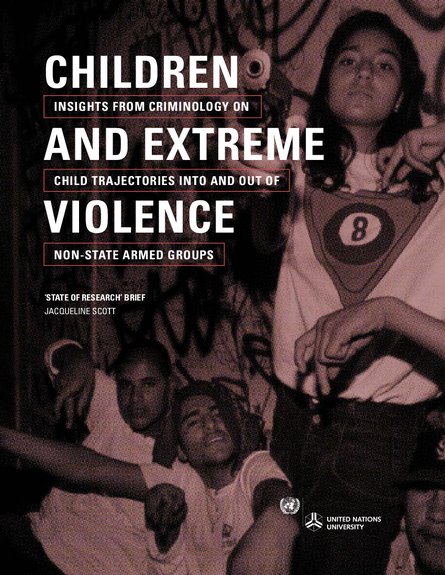
The United Nations University (UNU), in concert with UNICEF, the Department of Peacekeeping Operations (DPKO), and the governments of Luxembourg and Switzerland, is leading a research initiative examining child trajectories into and out of non-state armed groups (NSAGs) in contemporary conflicts, including those listed as terrorist and characterized as “violent extremist.”1 This project will produce programmatic guidance for preventing the recruitment and use of children by, and effectively disengaging children from, NSAGs that employ extreme violence. As part of an initial desk review process, UNU convened a series of “state of research” workshops to draw upon perspectives, expertise, and experience that traditionally have not been included in United Nations policy and programmatic discussions in this area. To summarize the workshops, build on the empirical findings discussed, and promote cross-learning, UNU has published a three-part “State of Research” series, which, in addition to this brief, includes Insights from Social Science on Child Trajectories Into and Out of Non-State Armed Groups and Viewing Non-State Armed Groups from a Brand Marketing Lens: A Case Study of Islamic State. This brief is based on a 9 December 2016 workshop that UNU hosted with criminologists, sociologists, and practitioners to discuss how research on, and experiences with, delinquency, crime prevention and desistance, and gang prevention and disengagement might be applied to research on, and programming for, children associated with contemporary NSAGs. This “State of Research” Brief provides a summary of the workshop discussions combined with a limited literature review drawing from the studies and research cited during the workshop. The brief does not attempt to provide a comprehensive review of all the relevant work in this area. Rather, it outlines a few of the robust findings and points of consensus across the academic literature and practitioner experiences on criminality, violence, and street gang-related programmes, focusing on research that serves as a helpful analogue or findings that have implications for understanding child trajectories into and out of NSAGs.